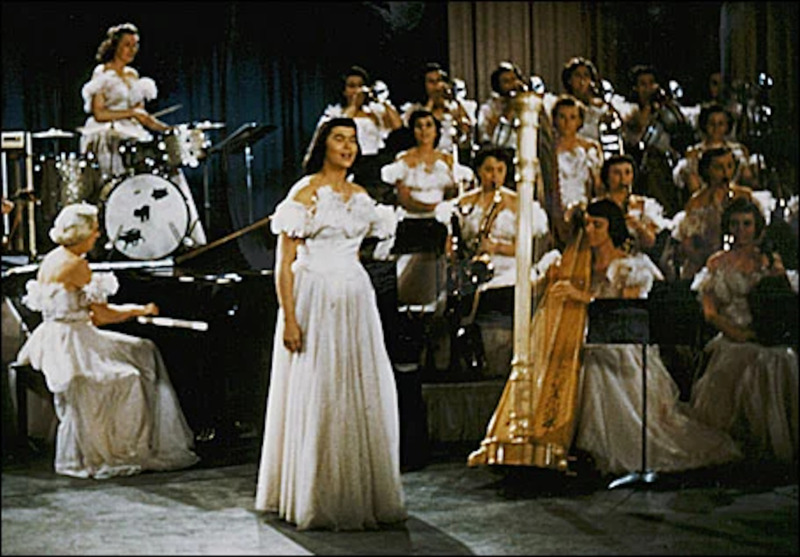The Radio Years
To continue the success of the sales force that was the Hormel Girls, Jay Hormel had decided to create what later would become a traveling radio show. The Music with the Hormel Girls radio show debuted on March 30, 1948, in Los Angeles, California on a single radio station, KHJ. The popular show quickly spread from a single station to the entire Mutual Broadcasting System by May 1948.
Popularity of the Music with the Hormel Girls radio show grew and by 1953 the show had ranked number four in the yearly rankings for weekend radio shows.
The production switched from the Mutual Broadcasting System to the American Broadcasting System, Armed Services Network along with some stations for CBS, allowing for the show to be heard across the US.
The traveling show added a stage component allowing listeners the opportunity to see the live performance for free. The audience was able to view the live radio broadcast alongside an accompanying stage show that laid the groundwork for the televised performances of the later years of the Hormel Girls.
Since the Hormel Girls were a traveling musical advertising group, they were rarely in one place long. To help keep their families and friends updated, they would use any form of communication to reach home. They would send letters or telegrams home when they knew they would be playing on the radio. The radio broadcasts were based on the local time of the radio show, but they could be heard nationwide which is why the radio worked as a successful campaigning platform for the Hormel Girls. This nationwide radio audience is what kept the Hormel Girls on the road throughout the late 1940s and into the 1950s.
The Hormel Girls’ radio years kept them on the road quite often, but their popularity drove the need for them to perform at broadcasting stations across the country. They look back on their radio years with a sense of nostalgia as they remember the costumes they wore, the different places they visited, and how they were being paid to do so.
Since there were different perks to working the radio shows, the Hormel Girls would join the band even if it meant having to leave prior engagements. The Hormel Girls popularity was unrivaled and radio years saw large numbers of women joining to get their chance on the radio.
Canned: the end of an era for the Hormel Girls
While the Hormel Girls had one of the most successful radio shows of their time, television was becoming an innovative and highly marketed product. After World War II, America mastered mass production, significantly lowering the cost of televisions. This made them easily accessible to the American people (UMLP), and until 1951, there hadn’t been any other invention consumed quicker by the American public (Kurin). Communication mediums began to shift throughout the 1950s, and radio faded out as television made its way in.
Many members of the original Hormel Girls began resigning in 1951. Eleanor and her friends became frustrated when new policies prevented them from leaving the group shortly after a break. Needing a change, Eleanor planned to leave at the end of May 1951. The Hormel Girls filmed a few television shows, but they never gained popularity the way the radio broadcasts did. Ultimately, the American public was moving away from the radio and closer to television. The group’s travels cost over 1.3 million dollars a year, and when combined with their poor television traction, the Hormel Girls were disbanded by Jay Hormel in December of 1953.








